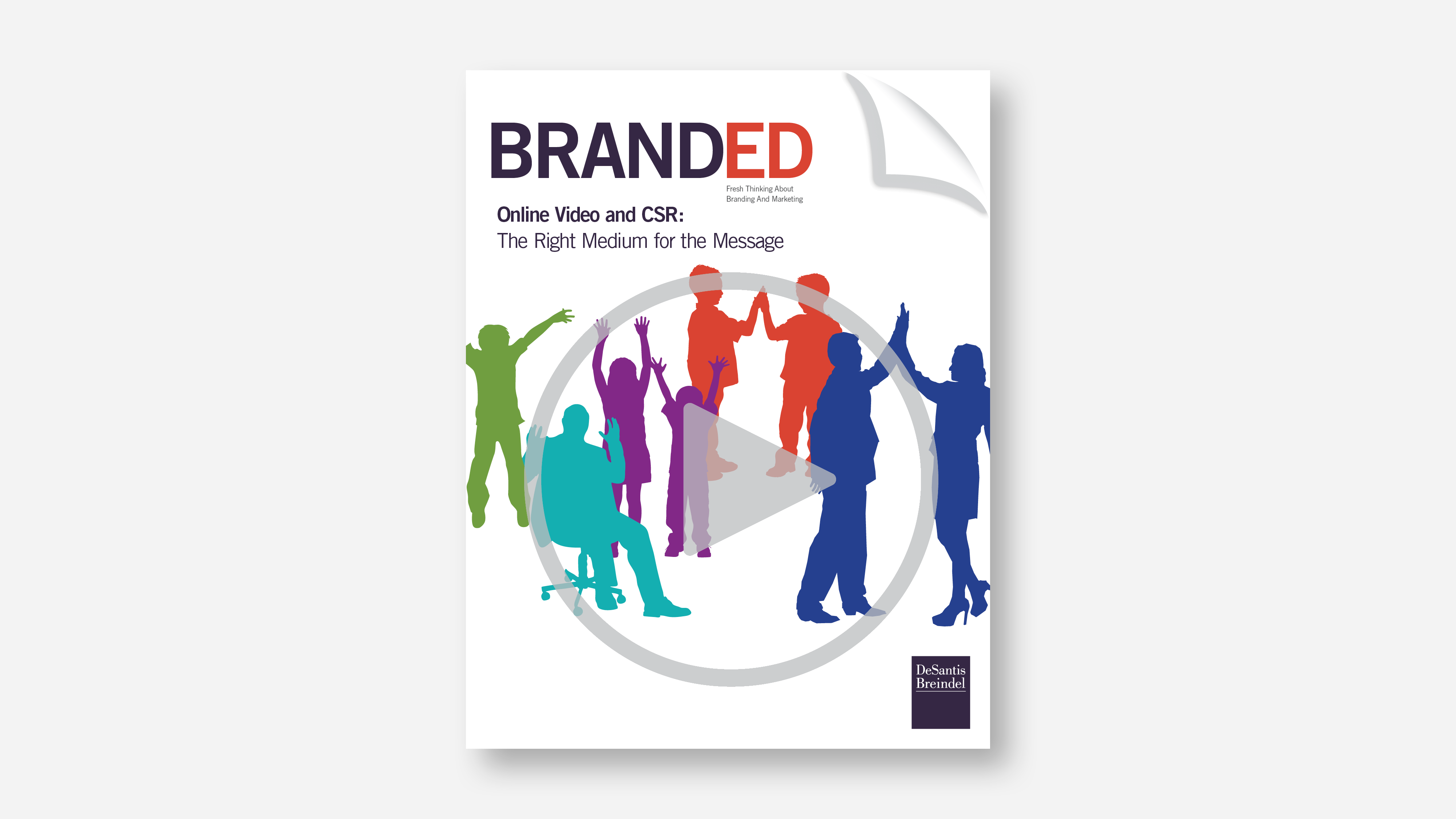
For companies that want to convey the impact of their giving– whether measured in volunteer hours or dollars—online video is the most powerful, cost-effective medium. Video, with its immediacy, popularity, and viral potential, represents a unique opportunity to capture the breadth of CSR’s impact, provide an intimate look at the people involved, and reach a receptive audience.
“Tell me and I’ll forget; show me and I may remember; involve me and I’ll understand.” While that may sound like wisdom gleaned from a fortune cookie, the underlying truth of that aphorism sums up film’s power. Film engages its audience with imagery, voices, and music simultaneously, building an instant emotional connection between subject and viewer. The phrase “moving pictures” doesn’t merely refer to images with action, but bespeaks film’s unparalleled storytelling ability.
As award-winning documentarian, and head of DeSantis Breindel’s film department, Xan Parker, explains, “Film is an emotional medium – the mind remembers what the heart feels. It’s the most substantive and powerful way to communicate a message. As an inherently powerful medium, it communicates through multiple channels- music, aesthetics, character, composition…It takes you on a journey.” And now thanks to portable technology and social media, the ability to create, view, and share video is in everyone’s hands—literally.
According to ComScore’s Video Metrix service, 170 million U.S. Internet users watched an average of 13.6 hours of online video content in February. YouTube is the second-most trafficked site on the Internet. Almost a third of the U.S. population has a smartphone with video taking capability, according to Nielsen.
Online video viewership, already robust, will explode by 2015, according to various researchers. Nomadic online video viewing—watching in fixed locations outside the home, such as in hotels, airports, coffee shops, etc.—is expected to grow to 154 million users by 2015, according to NPD Group. That compares favorably to the projected 175 million users expected to view online video at home by the end of that same year. Video viewership on a mobile basis is expected to hit 77 million people in 2015, vs. 6 million users in 2010. Social media outlets like Facebook are pouncing at the chance to include video chat.
The Paradox – and Appeal – of Video
People say that Google has made us stupider. If that’s the case, YouTube has made us lazier. When was the last time you actually read the 3,000-word story that some well-meaning colleague sent you a link to? (Of course, you meant to. You might have even printed it out for “later.”) But you don’t think twice about stealing a couple of minutes to watch a video that someone sent. Getting a link to a weighty story seems like punishment; a link to the latest viral video is like a “Get Out of Jail Free” card.
The paradox—and much of the appeal—of video is that it requires little effort on the part of the audience yet delivers a huge impact. It may be the perfect medium for a world filled with harried, ADD-addled adults.
Little wonder, then, that companies are increasingly using video in addition to–or even instead of–text to communicate on the Web. While it is more effective for some purposes than others (nobody really needs to see the video equivalent of an analysts’ call), it is definitely a large part of corporate messaging and will continue to be so.
Video is also a practical choice. The evergreen, timeless nature of images means that content can be repurposed without appearing stale. The same video can be used internally for onboarding, recruiting, in townhalls, on a company’s intranet; externally it can be part of a news release, provide B-roll for TV, or shown at investor relations meetings or shareholder conferences. While producing the requisite broadcast-quality film takes an upfront investment of time, money, and other resources, the economies are in the economies of scale.
Telling Your CSR Story through Film
One area where companies are having great success with online video is in communicating about their CSR efforts. A company’s philanthropy efforts often represent its best chance to make a positive emotional connection with the public. (See our recent White Paper, The Halo Effect.) After all, CSR is about people—the givers, the volunteers, the beneficiaries, the decision-makers. With one short video, a company can highlight the causes it champions, celebrate its volunteers, showcase the beneficiaries, and tell stories that otherwise wouldn’t get told. Here is an example of how the Robert Wood Johnson Foundation has done this:
One client of ours, a large global financial institution, has engaged us to make a series of films highlighting its investment in emerging businesses around the world. With dubbing, reediting, and minor changes, we are able to make regionally appropriate versions that the company can use locally, for both internal and external audiences.
Even a short film—perhaps five minutes—can present multiple points of view, explore different stories, and yes, tug at heartstrings. Can anyone help but be moved when they see and hear a real person talk about how they have been helped? For external audiences–policymakers, potential donors, and possible partners—these same videos can be a source of persuasion, serving to inform and educate.
CSR stories serve other purposes as well. A company’s philanthropic work can be a great morale builder, serving as a source of corporate pride and giving employees the chance to bond. (See our White Paper, Branding Employee Volunteerism: Building Culture and Community.) Having a strong reputation vis-à-vis CSR can also be a powerful recruiting tool. Numerous studies have found that Gen Y has a strong desire to be associated with companies that “do good.” Recruiters and HR people also report that interviewees of all ages ask about companies’ CSR programs and policies.
As companies find that CSR becomes a larger part of their branding proposition, both internally and externally, the need to communicate effectively to donors, volunteers, policymakers, and other stakeholders becomes more urgent. Video, because of its malleability, the ease with which it can be consumed and shared, and its ability to combine multiple mediums makes it the most engaging, cost-effective, and persuasive medium for telling the CSR story. A company that relies only on print and written communications is missing the opportunity to connect with an enormous and growing audience that is continually moving towards visual channels as a way of interacting with the brands that matter to them.
